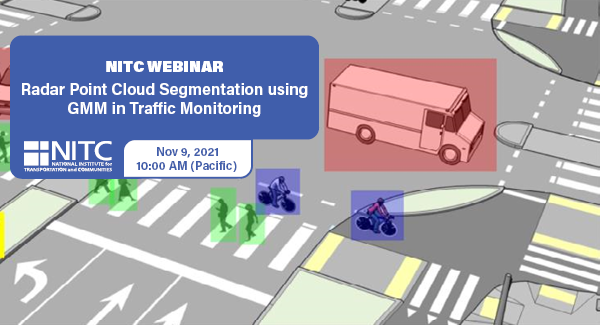The video begins at 5:27.
View slides
Abstract: Today, most streets are designed and managed to meet mobility standards that focus on the movement of motor vehicles, failing to adequately accommodate and prioritize transit, walking, and biking. A new culture of innovation is needed in transportation as traditional solutions alone will not suffice. By 2035, the Portland Plan envisions transportation facilities that are designed and managed to prioritize travel investments that improve walking, biking, and universal accessibility as the first priority.
In support of this vision, Peter Koonce, Manager of the City's Signals, Street Lighting, & ITS Division will discuss how he's looking to make the City's traffic signals consistent with these goals resulting in more effective integration of land use, transit, cycling, and walking. The discussion will be centered around research that is needed to improve our understanding of best practices from the U.S. and Europe for application in Portland.
View slides
If you would like to receive continuing education credits such as PDH or CM, please make sure to complete this evaluation form once you've watched the entire video so that we have a record of your attendance.
Watch video:
Read morePRESENTATION ARCHIVE
OVERVIEW
Intelligent transportation systems (ITS) change our communities by improving the safety and convenience of people’s daily mobility. The system relies on multimodal traffic monitoring, that needs to provide reliable, efficient and detailed traffic information for traffic safety and planning. How to reliably and intelligently monitor intersection traffic with multimodal information is one of the most critical topics in intelligent transportation research.
In multimodal traffic monitoring, we gather traffic statistics for distinct transportation modes, such as pedestrians, cars and bicycles, in order to analyze and improve people’s daily mobility in terms of safety and convenience.
In this study, we use a high-resolution millimeter-wave (mmWave) radar sensor to obtain a relatively richer radar point cloud representation for a traffic monitoring scenario. Based on a new...
Read moreView slides
Watch video:
The goal of signal timing at an intersection should be to maximize efficiency for all users. In many jurisdictions, however, traffic signals are timed mostly with the goal of reducing vehicular delay.
Other road users, such as pedestrians, deserve similar focus. In legacy transportation systems,...
Read moreThe video begins at 3:14.
View slides
Abstract: As part of Clark County Public Health’s Planning Active Walkable Neighborhoods project, a Health Impact Assessment (HIA) was conducted on the county’s Bicycle and Pedestrian Master Plan. A rapid HIA was completed to provide input on the draft plan, and a subsequent comprehensive HIA was designed to evaluate the impacts of final proposals. This presentation will provide an overview of the process and results of the HIA, examine lessons learned, and discuss transferability to other jurisdictions or projects.

